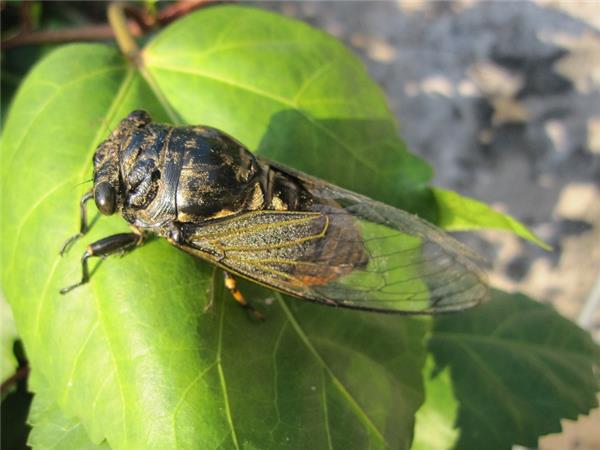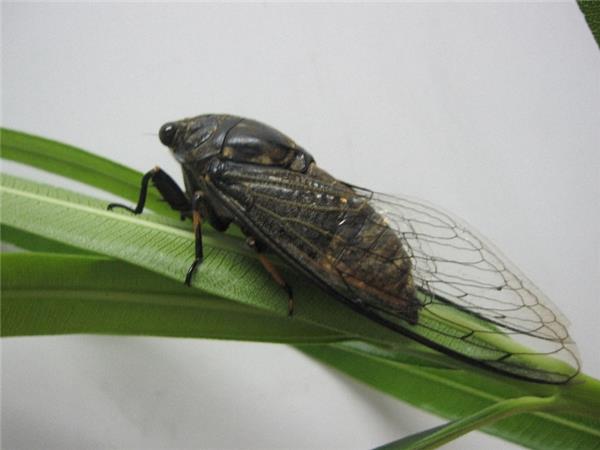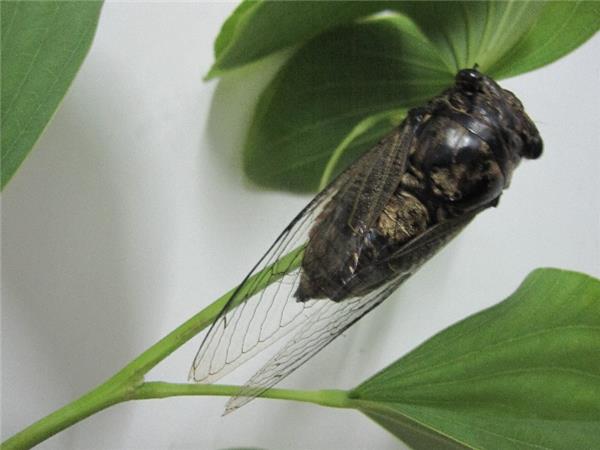The harm of grasshopper cicada to plants and the control methods of cicada pests
Cicadas are insects that are neither loved nor loved by trees. When a large number of cicadas are attached to certain trees, they will pose a threat and harm to this tree, so it is necessary to control them as soon as possible.

Harmful characteristics of grasshopper cicada
Whenever the spring is warm, the larvae move upward and suck the sap of the plant roots, and when autumn goes to winter, they go deep into the soil to avoid the cold. The female adults continuously pricked holes on the shoots to lay eggs in an irregular spiral arrangement, resulting in diagonal cracks in the subcutaneous xylem of the shoots, causing the upper shoots to dry up. In the area where the insect occurs seriously, it is often covered with withered branches at the end of autumn.
Morphological characteristics of grasshopper cicada
The adult is 40mm to 48mm long, black and shiny. There are yellowish-brown plaques on the anterior edge of the head and the parietal forehead. The front and rear wings are transparent. The male worm has a buzzer. The female has no buzzer and the ovipositor is obvious. The eggs laid by the female are long oval, about 22.5 mm long, milky white and shiny. The nymph is yellowish brown with winged buds and can crawl.

The living habits of grasshopper cicada
The larvae of cicadas live in the soil all their lives. When you are about to Eclosion, get out of the soil surface at dusk and night, climb up the tree, and then grasp the bark and molt and Eclosion. At the end of June, the larvae began to emerge into adults, and the life span was about 60-70 days. In late July, the female adults began to lay eggs, and the spawning period was in the first and middle of August, and the eggs were mostly laid on the shoots with a diameter of 4mm and 5mm. When the female adults lay eggs, they first pierce the bark with the ovipositor, insert the ovipositor into the branch tissue, create a claw-shaped egg hole, and then lay eggs in the xylem. There are 6-8 eggs in each spawning hole. There are more than 90 cicada eggs on a branch. The eggs laid will hatch in the middle of June of the following year. After hatching, the larvae fall to the ground from the branches and then drill into the soil. The larvae lived in the soil for several years and molted for 5 times.

Control methods of grasshopper cicada
1. Thoroughly remove the parasitic plants on the edge of the garden. Grasshopper cicadas like neem, Toona sinensis, paulownia, eucalyptus and other trees to perch, the garden side host trees must be completely eliminated to avoid causing trouble into the garden or cut off the migration of the insect, so as to facilitate centralized killing.
2. Combined with winter and summer pruning, cut off the withered branches that have been laid eggs, in order to destroy a large number of eggs that have not yet hatched into the soil, cut off the branches and burn them. Because of its long egg period, it takes advantage of this weakness in its life history to persist for several years with remarkable results. This method is the most economical, effective, safe and simple method to control this insect.
3. The old mature nymph has the habit of Eclosion on the tree at night, but the foot end only has sharp claws, but there is no interclaw process, so it can not crawl on the smooth surface. Wrapping plastic film or transparent glue at the base of the trunk can prevent the emergence of the old nymph and stay around the trunk to kill or release chickens to hunt.
4. Control agents: use 50% acetamiprid water dispersible granule (Guoguang Chongge) 3000 times solution, 10% imidacloprid wettable powder (such as Guoguang Ke) 1000 times solution, 40% acetamiprid. Toxic EC (such as Guoguang must be treated) 1500-2000 times liquid, or acetamiprid water dispersible granule (Guoguang Chongcarve) 3000 times liquid + 5.7% methyl vitamin salt EC (Guoguang Lok) 2000 times mixture spray can be targeted prevention and control.

Like the control principle of all flowers and trees, the control of grasshopper cicadas is of course based on prevention, especially to find ways to eradicate their eggs and larvae in order to avoid the recurrence of cicada pests in the coming year.
- Prev

The propagation mode of yellow yellow and the control methods of diseases and insect pests
The propagation mode of yellow yellow and the control methods of diseases and insect pests
- Next

How to hydroponically cultivate plants with glass vases
How to hydroponically cultivate plants with glass vases
Related
- Wuhan Hospital Iron Tree Blooming Result Was Instantly Frightened by the Gardener Master
- Which variety of camellia is the most fragrant and best? Which one do you like best?
- What is the small blue coat, the breeding methods and matters needing attention of the succulent plant
- Dormancy time and maintenance management of succulent plants during dormancy
- Minas succulent how to raise, Minas succulent plant pictures
- What are the varieties of winter succulent plants
- How to raise succulent plants in twelve rolls? let's take a look at some experience of breeding twelve rolls.
- Attention should be paid to water control for succulent plants during dormant period (winter and summer)
- Watering experience of twelve rolls of succulent plants
- Techniques for fertilizing succulent plants. An article will let you know how to fertilize succulent plants.

